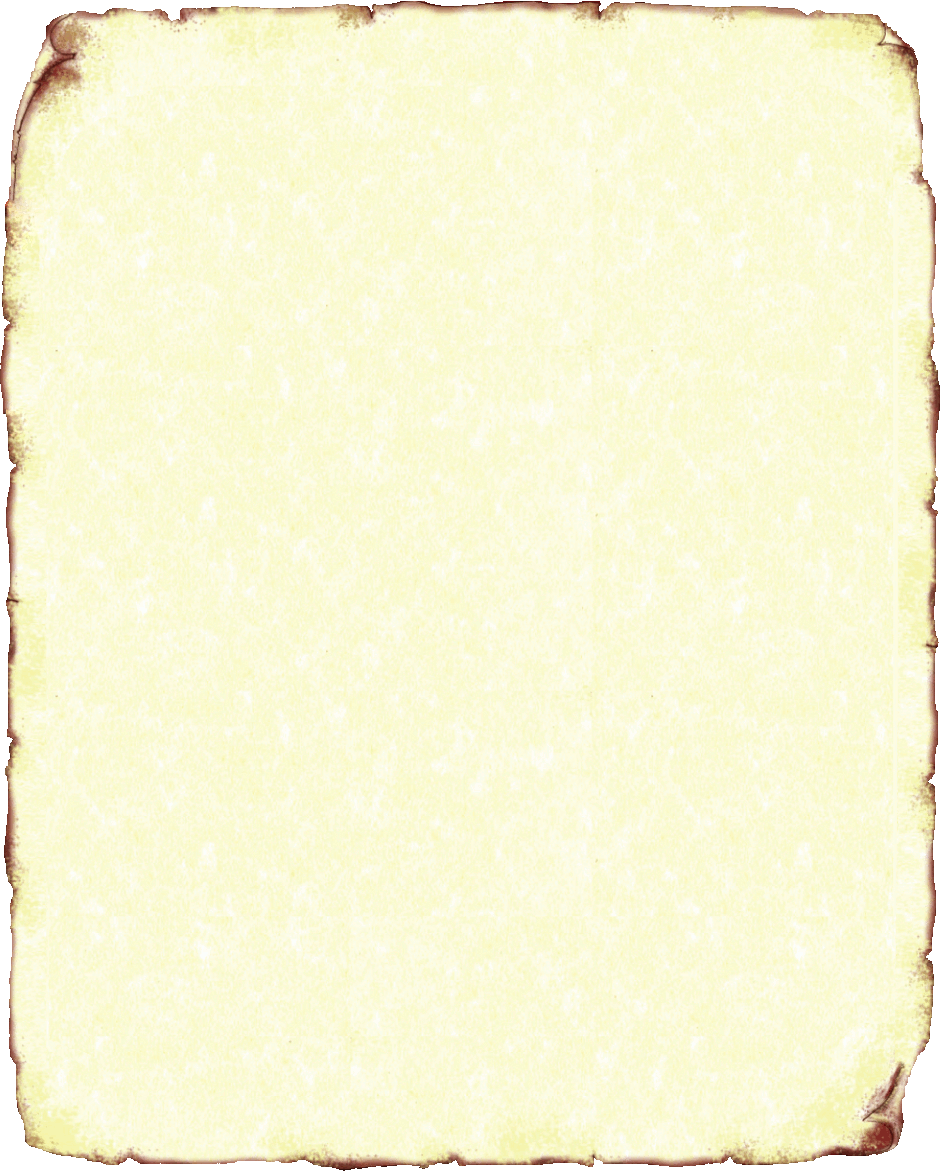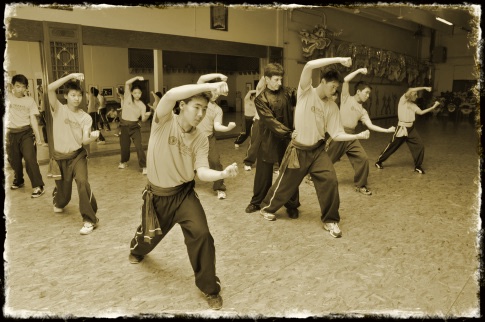
Martial Study
Empty Hand Sets (徒手套路)
An Empty Hand Set is a choreographed sequence of movement patterns, which enable a student to simulate defending him or herself against, and counterattacking one or more imaginary opponents. Constant practice of these movement patterns will improve stances, focus, sense of direction/distance, eye contact, balance, flexibility and power and will teach the pupil many new and effective techniques.
 Many of the Empty Hand Sets in different styles of Kung Fu are named after animals: Tiger Set (虎拳套路), Black Panther Set (黑豹套路), Monkey Set (猴拳套路), etc. Each of these animals has particular characteristics – the tiger is known for its strength and directness, the monkey for its slyness and side to side shifting — thus, the techniques included in the respective sets are designed to mimic and teach those attributes. The student is taught to understand and incorporate the applications of those characteristics (techniques), which best complement his or her own abilities and personality.
Many of the Empty Hand Sets in different styles of Kung Fu are named after animals: Tiger Set (虎拳套路), Black Panther Set (黑豹套路), Monkey Set (猴拳套路), etc. Each of these animals has particular characteristics – the tiger is known for its strength and directness, the monkey for its slyness and side to side shifting — thus, the techniques included in the respective sets are designed to mimic and teach those attributes. The student is taught to understand and incorporate the applications of those characteristics (techniques), which best complement his or her own abilities and personality.
In order to properly perform the patterns, the student must be able to visualize the real life application of each technique. He or she needs to understand when, why and how each technique is to be used or delivered and execute that technique with spirit and commitment. In Shaolin Hung Mei, we strongly emphasize the rationale behind each movement. The students are taught to feel and internalize the patterns, rather than just perform them. Only when they reach that level of understanding can they effectively apply the techniques.
Ultimately, the students will be required to dissect each of the Empty Hand Sets learned. There are many techniques within the framework of a particular Set. However, not all of the techniques are meaningful for all practitioners. Each of us has different abilities and physical make ups —short/tall, fast/slow, heavy set/thin — and needs to develop those techniques that suit the individual best. After the student has gained a deep level of understanding of each Set, he or she will be asked to distill and assimilate the most applicable techniques.
We, in Hung Méi, are fortunate to have a variety of Sets from which to learn different skills. As mentioned in the General History section (see Recent Shaolin Hung Méi History), our Tai Shī Fù (大師父), Tonny Kho (許敬唐), originally learned his Kung Fu from his Grandfather, Zōng Shī Huáng Shuĭ Xíng (宗師黃水行), a Southern Master and later from his Grandfather's friend, Zōng Shī Wú Shén Xī (宗師吳神禧), a Northern Master. The combination of the two offers large diversity of not only Empty Hand, but also Weapon Sets. This collection of skills provides all of the techniques and applications needed to satisfy any student.
Some styles of Kung Fu teach Sets that are designed to emphasize the art form. The forms taught in Hung Méi (洪眉), although beautiful to watch, focus on the application of technique. Below is a partial list of the Empty Hand Sets that the Hung Méi student learns:
From Tai Zŭ (Southern): 太祖 (南拳)| Shù Quán | 術拳 |
| Yīng Zhuă | 鷹爪 |
| Tai Xíng Quán | 太行拳 |
| Yī Mén | 一門 | Sì Mén | 四門 |
| Èr Mén | 二門 | Liù Mén | 六門 |
| Sān Mén | 三門 | Bā Mén | 八門 |
| Shí Zì Quán | 十字拳 | Qī Shí Èr Dì Shā | 七十二地煞 |
| Jīn Mén Quán | 金門拳 | Wŭ Lĭ Quán | 五嶺拳 |
| Sān Shí Liù Tiān Gōng | 三十六天宮 | ||
| Tai Jí Quán | 太極拳 |
| Xiăo Fāng Jiā | 小方家 |
| Lóng Hŭ Quán | 龍虎拳 |
| Tán Tuĭ | 彈腿 | Bā Gua Quán | 八卦拳 |
| Fú Hŭ Quán | 伏虎拳 | Dì Lóng Quán | 地龍拳 |
| Hēi Hŭ Quán | 黑虎拳 | Da Hung Quán | 大洪拳 |
| Bā Duan Quán | 八段拳 | Xiăo Hung Quán | 小洪拳 |
The first Set the student learns is Tai Zŭ Yīng Zhuă (太祖鷹爪) (Eagle Claw Form). The set not only teaches applications of the Eagle Claw technique, but is also an excellent way to introduce the pupil to stance shifts, dynamic tension exercises and releases from wrist grabs. Subsequently, the student learns the series, "Tán Tuĭ" (譚腿), from the province of Shān Dōng (山東). Tán Tuĭ (譚腿) is practiced by many styles of Northern Kung Fu. There are 12 sequences in the series taught in Hung Méi. Some other styles have combined several of the sequences and now teach ten. Tán Tuĭ (譚腿) introduces the students to many different hand techniques, kicks, stances sweeps, shifts, etc., and forms the foundation for future applications.
